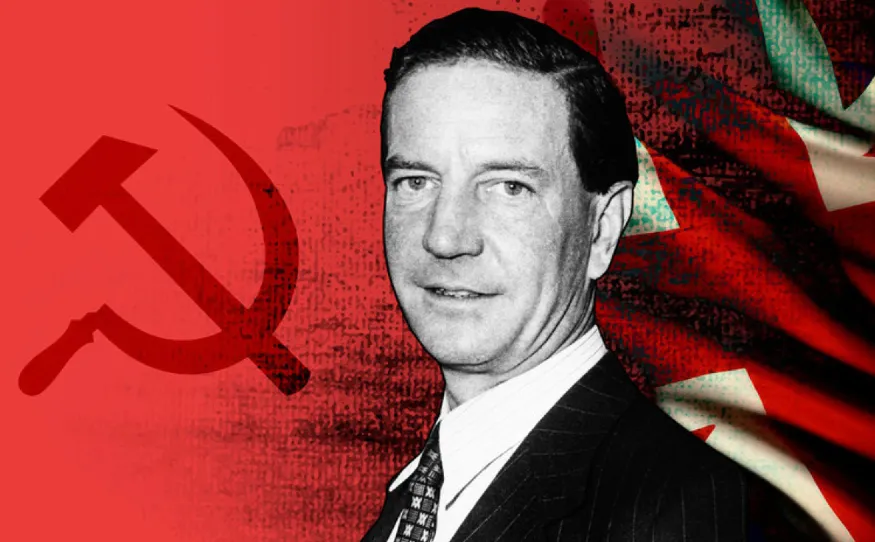Kim Philby: Who Is the Real MI6-KGB Spy Behind 'A Spy Among Friends'?
MI6-KGB double agent Kim Philby bragged about how he smuggled top-secret documents out of the Secret Intelligence Service HQ and betrayed British and American CIA spies during Philby's hour-long espionage masterclass to East German Stasi spies in 1981.
Footage recovered decades later from the Stasi Records Agency (BStU) shows Philby boasting about his tradecraft and recalling his "30 years in the enemy camp". Philby explains how he leveraged his education and upper-class contacts - Eton public school, a degree from Cambridge University - to become Moscow’s inside man. He is believed to have been responsible for the deaths of thousands of anti-communists from Albanians to Estonians, Georgians, and Armenians. Here are five secrets Philby revealed in his Stasi talk.
1. Moscow played the long game when recruiting Philby
Philby was 22 when he was recruited by a Soviet contact named 'Otto' in London’s Regent’s Park. Philby had married a Communist member, a woman he’d met in Vienna, and she arranged the initial meeting. Kim had no real job prospects and no role with British intelligence at the time.
“Dear comrades,” Philby said, addressing the Stasi secret police. "I had no access to any secret information. I had no job. I didn't even know where my job would be. The only reason for taking me on was that I had worked for nearly a year for the illegal Communist Party in Moscow and I had impeccable bourgeois origins and bourgeois education.”
2. Philby plied an MI6 archivist with alcohol to get files
Philby leveraged his job as a journalist with The Times newspaper where he was on friendly terms with establishment contacts and made sure he was introduced to the right people at MI6. Once inside the agency, Philby cultivated his reputation as a gossip and heavy drinker. One of his contacts was an alcoholic ex-policeman who controlled the MI6 ‘source books’ - the record of foreign spies run by British intelligence - which were soon in Philby’s hands.
“Every evening I left the office with a big briefcase full of reports which I had written myself, full of files taken out of the actual documents - out of the actual archives. I was to hand them to my Soviet contact in the evening. The next morning I would get the files back, the contents having been photographed, and I’d take them back early in the morning and put the files back in their place. That I did regularly - year in, year out.”
"The brand new social experience where you activate your gaming skills as you train like a spy."
- TimeOut
Take on thrilling, high-energy espionage challenges across different game zones.


3. Philby was told to get rid of his boss
Kim rose through the ranks quickly and was appointed as MI6's liaison with the CIA and FBI in Washington, D.C. He traded gossip over liquid lunches with CIA supremo James Angleton but spying was tougher than it looked.
“Some of Moscow’s instructions were very difficult to carry out. But the thing began to work, you know,” Philby told the Stasi. One of his instructions was to replace Felix Cowgill, his boss at MI6. “So I said, ‘My instructions from the Center are that I must get rid of my own boss and take his place, yes?’ And he said, ‘yes’.” Philby proceeded to undermine Cowgill and was posted as the head of MI6’s anti-Soviet Section IX over Cowgill.
4. Kim admits being a traitor is dirty work, but so what?
Kim admitted that being a traitor can be distasteful but the ends justify the means: “It is a very, very dirty story but, after all, our work does imply getting dirty hands from time to time but we do it for a cause that is not dirty, don’t we?”
5. Kim avoided getting caught by denying everything
Philby was suspected of being a Soviet mole in 1951 when two of his Cambridge colleagues - Guy Burgess and Donald Maclean - defected to Moscow. Philby is believed to have told Burgess and Maclean they were the target of an investigation. Philby was questioned later but simply denied everything and carried on spying for years.
He moved to Lebanon to work as a journalist and, when MI6 began circling once again in 1963, Philby left a written confession with his MI6 friend and drinking partner, Nicholas Elliott. He disappeared before facing charges. Philby died in Moscow in 1988, 25 years after defecting. His wife claims he tried to drink himself to death. Earlier that year, journalist Phillip Knightley asked Philby if, despite all the betrayals, he’d do it all again, ''Absolutely,'' Philby replied.
SPYSCAPE+

Join now to get True Spies episodes early and ad-free every week, plus subscriber-only Debriefs and Q&As to bring you closer to your favorite spies and stories from the show. You’ll also get our exclusive series The Razumov Files and The Great James Bond Car Robbery!


Gadgets & Gifts
Explore a world of secrets together. Navigate through interactive exhibits and missions to discover your spy roles.
Your Spy Skills
We all have valuable spy skills - your mission is to discover yours. See if you have what it takes to be a secret agent, with our authentic spy skills evaluation* developed by a former Head of Training at British Intelligence. It's FREE so share & compare with friends now!
* Find more information about the scientific methods behind the evaluation here.


Stay Connected
Follow us for the latest
TIKTOK
INSTAGRAM
X
FACEBOOK
YOUTUBE